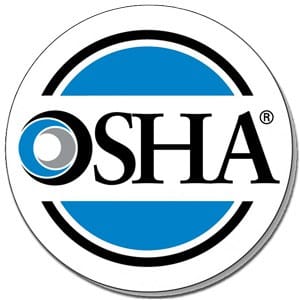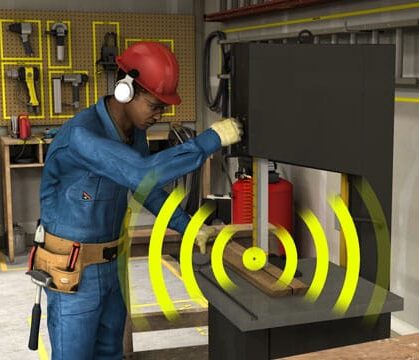November 10, 2023 min read

The Top 10 OSHA Violations of 2023 and How to Prevent Them
Industry:
Solution:

Workplace safety is a critical concern for both employers and employees. The Occupational Safety and Health Administration (OSHA) plays a pivotal role in setting and enforcing safety standards in the United States.
Despite significant progress in safety measures and regulations, violations continue to persist year after year. Penalties for the top 10 OSHA violations cost businesses over $85 million, which underscores the importance of proper employee safety training to raise awareness of common workplace hazards and avoid them. In this blog, we’ll discuss the top 10 most common OSHA violations in 2023 and explore how eLearning courses on these top violations can offer effective solutions to protect workers.
“Although incredible advancements are made in safety each year, we continue to see many of the same types of violations appear on OSHA’s Top 10 list. As a safety community, we must come together to acknowledge these persistent trends and identify solutions to better protect workers.”
Lorraine Martin
NSC President and CEO
Top 10 OSHA Violations of 2023
Safety Training for Easy OSHA Compliance Guide
Find out which safety training courses can help you stay in compliance with OSHA requirements – including the top standards that employers most commonly violate.
Download Guide
How You Can Act Now
eLearning has emerged as a powerful tool to address these persistent safety concerns. Here’s how it can help:
- Accessibility and Convenience: Employees can access eLearning courses at their convenience and complete them at their own pace using a Learning Management System (LMS) or mobile device. This enables them to enhance their safety knowledge and skills without taking time away from work and can serve as on-the-job refresher training.
- Standardized Training: eLearning provides consistent training across sites and teams to reduce the risk of knowledge gaps. It enables employees to address prevalent workplace hazards while fostering a proactive, high-performing safety culture.
- Interactive Learning: Interactive eLearning modules engage learners with videos, simulations, quizzes, and real-world scenarios, making it easier to identify and address hazardous conditions.
- Continuous Learning: As safety regulations and best practices evolve, eLearning courses can be updated quickly to reflect the latest standards and regulations, ensuring employees are always up to date on safety guidelines.
Addressing the Most Common OSHA Violations
Let’s take a closer look at how eLearning can address the most common OSHA violations:
1. Fall Protection: eLearning can offer comprehensive training on fall protection and prevention, including the proper use of equipment, inspections, and techniques to minimize the risk of falls.
- Fall Prevention and Protection – General Industry
- Worksite Safety: OSHA Fall Protection Training
- Slips, Trips, and Falls
- Microlearning Course: Fall Protection – Reducing Risk of Falling
2. Hazard Communication: eLearning modules can educate employees on how to identify and address hazardous chemicals, substances, and materials, ensuring that they are aware of potential risks and can take necessary precautions.
- Hazard Communication GHS
- Hazardous Material Classifications
- Hazardous Material Labeling
- Hazardous Material Storage
- Worker Right to Know (RTK)
- Arsenic Awareness
- Microlearning Course: Flammable and Combustible Liquids Hazards
3. Ladders: eLearning provides employees with the information needed to be aware of the hazards related to ladders and best practices for using ladders, including how to use, store, and maintain a ladder properly to prevent falls and injuries.
- Ladder Safety
- Safety Case Study: Fall from a Ladder
- Microlearning Course: Ladder Use and Maintenance
4. Scaffolding: eLearning illustrates different scaffold types, assembly procedures, and potential dangers and emphasizes the safety measures needed for scaffold erection, inspection, and dismantling procedures.
- Scaffolds and Mobile Elevated Work Platforms
- Supported Scaffold Safety
- Microlearning Course: Scaffold Site and Setup
5. Powered Industrial Trucks: Employees will learn how to identify the common safety features and working dimensions of forklifts and understand the correct procedures for operating a forklift to prevent accidents and injuries.
6. Lockout/Tagout: eLearning courses can guide employees through the proper lockout/tagout procedures, reducing the risk of unexpected machinery startup during maintenance or servicing.
- Lockout Tagout for Affected Employees
- Lockout Tagout for Authorized Employees
- Safety Case Study: Lockout Tagout: Electrical or Heavy Equipment
7. Respiratory Protection: Employees will learn about different types of respirators and when and how to use them, ensuring that they are adequately protected in hazardous environments.
8. Fall Protection, Training Requirements: Employers can put their workers in interactive scenarios involving fall hazards and guides them through selecting appropriate fall protection equipment and techniques while covering legal requirements and standards related to fall protection.
- Fall Prevention and Protection – General Industry
- Worksite Safety: OSHA Fall Protection Training
- Slips, Trips, and Falls
- Microlearning Course: Fall Protection: How to Put On a Body Harness
- Microlearning Course: Fall Protection: How to Use a Lanyard
9. Personal Protective and Lifesaving Equipment, Eye and Face Protection: eLearning modules demonstrate the correct selection, fitting, and usage of personal protective equipment (PPE) for eye and face protection and showcase incidents where proper PPE usage prevented injuries, reinforcing the importance of compliance.
10. Machine Guarding: eLearning provides learners with interactive checklists for inspecting and maintaining machine guards, emphasizing the importance of regular checks.
Leveraging eLearning for Safer, Compliant, and Healthier Work Environments
OSHA’s Top 10 violations for 2023 maintain that workplace safety is an on-going concern. By embracing eLearning courses tailored to these specific safety issues, employers can better equip their workforce with the knowledge and skills needed to reduce incidents and protect their workers.
It’s essential for the safety community to come together, acknowledge these persistent trends, and invest in effective solutions that prioritize the well-being of employees. In the process, we can create safer workplaces, reduce violations, and ultimately save lives. To learn more about our 400+ award-winning health and safety courses, contact us today.
Online Safety Training
Learn more about our 400+ online safety training courses based on OSHA & EPA requirements and general best practices.
View Courses














